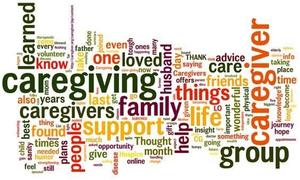4 ways this technology can help improve your life.
Betting that AI could lighten the clinician load.
Home Instead goal: Applying technology to make home care more efficient.
Mountain Empire serves about 3,000 people in Appalachia providing meals, transportation and personal care.
Five main obstacles that could hinder the responsible adoption of AI-based technologies and propose strategies to address them.

 It’s a pretty good tech universe if you know what you’re doing... Maybe you’re someone who reads all the
It’s a pretty good tech universe if you know what you’re doing... Maybe you’re someone who reads all the  We are selling a product that people don’t want to buy. This Senior Housing News article,
We are selling a product that people don’t want to buy. This Senior Housing News article,  Clearly many caregivers are missing out on useful technology. According to the new
Clearly many caregivers are missing out on useful technology. According to the new  The University of Michigan polled older adult responders – and the results are in. In a recent survey of more than 1000 adults aged 50+, the University of Michigan poll, fielded inside Michigan and nationwide, demonstrates that Artificial Intelligence technology is useful to older adults – and that they are not intimidated by it. As with other studies, those with less education had somewhat less trust in AI-enabled information, and those with health disabilities also were somewhat less trusting of the information they found. (Source: July, 2025
The University of Michigan polled older adult responders – and the results are in. In a recent survey of more than 1000 adults aged 50+, the University of Michigan poll, fielded inside Michigan and nationwide, demonstrates that Artificial Intelligence technology is useful to older adults – and that they are not intimidated by it. As with other studies, those with less education had somewhat less trust in AI-enabled information, and those with health disabilities also were somewhat less trusting of the information they found. (Source: July, 2025  This report is published every five years – and it is (still) dismaying. The new report,
This report is published every five years – and it is (still) dismaying. The new report,  AI technology is permeating every aspect of business technology today. Increasingly it will be deployed in the care of older adults, as apparent in research reports like
AI technology is permeating every aspect of business technology today. Increasingly it will be deployed in the care of older adults, as apparent in research reports like 